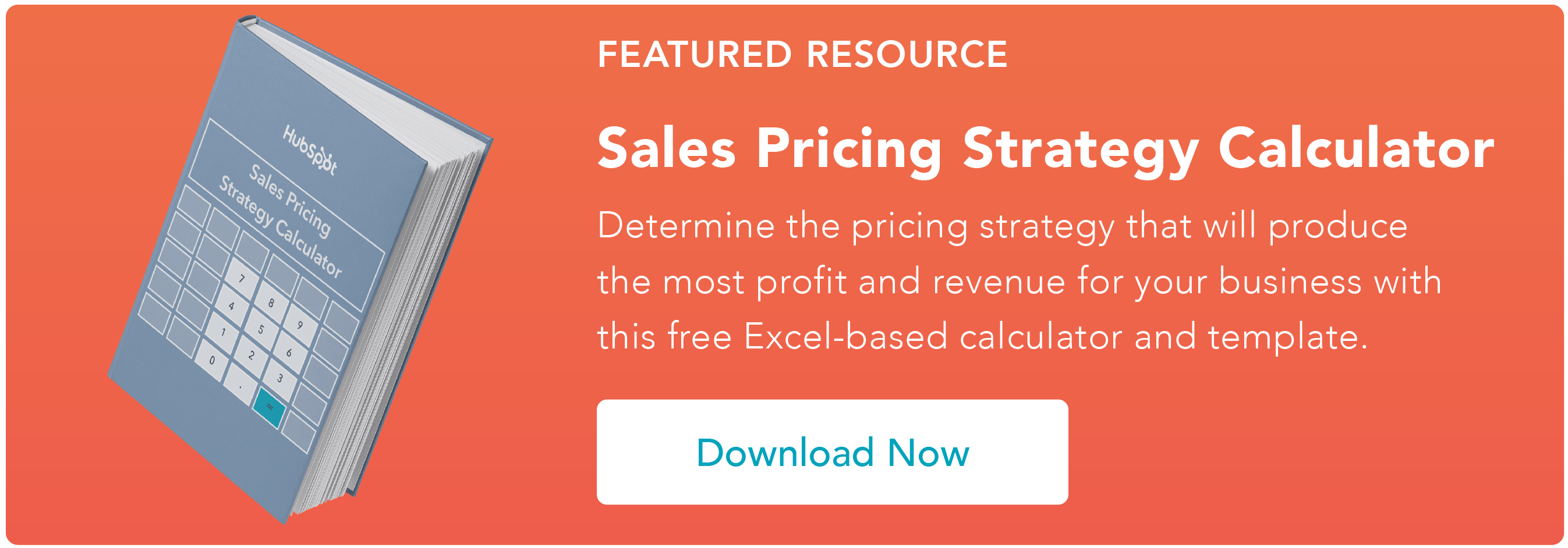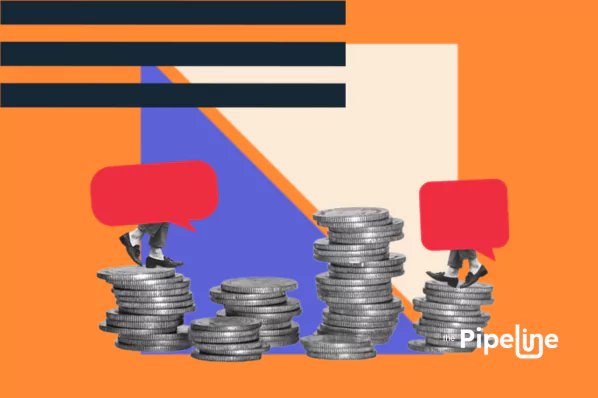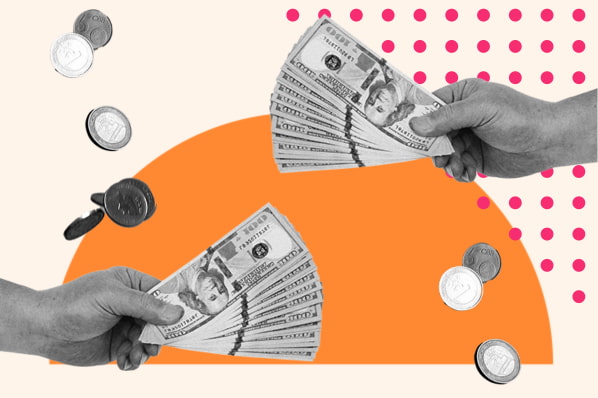A prestige pricing strategy is often closely tied to brand perception. Companies that take this approach often have products that are recognized for their superior quality or the value they add to the lives of customers.
The pricing method is based on the assumption that consumers perceive more value at higher prices — that expensive products are priced that way for a valid reason. Prestige pricing strategies can vary depending on a company's goals for its brand and offerings.
If you want to implement one yourself, you'll want to look at competitors in your market to see how they price products that are similar to yours. With a unique value proposition that differentiates your product from the competition, you'll be able to justify a higher price point.
Prestige Pricing Advantages and Disadvantages
There are both advantages and disadvantages to a prestige pricing strategy. Let’s take a look at them below.
Pro: Increased Revenue
The most obvious advantage is increased revenue: If you can establish your goods and services as worth a higher price, your total revenue increases. Successful prestige pricing can also raise your market reputation, especially if customers are willing to post about your brand on social media. This type of organic marketing is invaluable, since it comes from customers who have experience with your product instead of in-house marketing teams and accounts.
Pro: Brand Differentiation
Prestige pricing can also help set you apart from other brands that may be trying to capture the same market niche. Done right, your pricing strategy can help differentiate your brand from similar offerings by effectively creating a different category for your products. While slightly lower-priced items may be fundamentally similar to yours, prestige pricing can establish a different product tier that’s as much about your brand as it is about your product.
Con: Higher Marketing Costs
On the other side of the prestige pricing coin are potential disadvantages. First is the initial marketing costs — you’ll need to spend on consistent and comprehensive marketing to establish your business as a premium brand and convince buyers your products are worth the cost. And if another, similar brand is more successful with this approach, you may end up spending a substantive amount of money for minimal returns.
Con: Decreased Sales Volume
Sales volume is another possible disadvantage. Because your products have a higher basic price point, your overall customer market shrinks since you’re targeting a smaller segment of top-tier buyers. As a result, it’s critical to find a price point that results in sustained revenue based on specific market demographics, and develop ways to expand into new territories or buyer segments to ensure revenues don’t flatline.
What is a Prestige Pricing Strategy?
A prestige pricing strategy focuses on convincing prospective buyers your product or service is worth the extra money.
Simply raising your prices won’t do the trick — just because something is more expensive doesn’t mean it has more value or provides greater benefit to buyers. To make prestige pricing effective, businesses need an approach that underpins the value of prospective offerings in a way that resonates with customers and aligns with their subconscious perception of what a prestige product should deliver.
But what does this look like in practice? Let’s break down four key elements of a prestige pricing strategy.
Establish Your Image
If you want to charge prestige prices, you need to establish a brand image that sets you apart from the competition and positions you as the highest-value option in the market.
Consider brands such as Yeti, which has established itself as the premium supplier of equipment in the outdoor temperature-control gear market. Its line of coolers, bags. and cups are known for their usability and durability. It enables the company to charge substantially more than their nearest competitors, despite that fact that many similar brands have features that are nearly on par with Yeti.
The difference? Image.Yeti has spent the time and money to create an image across its website, social media platforms, and sales channels that position its products as those used by experienced adventurers who want the best of the best — and are willing to pay for it.
The same strategy applies to building your brand if you want to charge prestige pricing. First, you need to find a niche: Which set of products or services are your focus? Next, you need to establish a set of target customers and create a consistent brand image and experience across all of your channels. Finally, you have to deliver a product that lives up to initial expectations and that gets people talking about your brand, in turn reinforcing your image.
Increase Perceived Value
Next, you need to increase the perceived value of your most popular offerings with the creation of targeted pricing strategies.
Consider psychological pricing, which leverages consumers’ perception of a product’s value based on its price. The number nine offers the most obvious example: Products priced at $39 instead of $40 or $9.99 instead of $10 are often perceived as both more affordable and of slightly lower quality.
If you’re looking to create the impression of a premium product, it’s worth opting for round numbers. While this limits your potential buyer pool, it unconsciously creates a sense of greater value among customers and helps set your brand apart from the competition.
Make the Most of Choice
User choice is critical in establishing a premium brand — if you can make it work in your favor.
Here, the goal is to give users a set of choices that naturally lead to your preferred option. This concept is sometimes called the “Magicians Choice”, in which audience participants are given choices that always lead to the same outcome.
For example, if you have three objects (A, B and C) and want someone to pick A, you ask them to select two objects. If they pick B and C, you say you’ve eliminated them and A is the choice. If they pick A and B, you eliminate C and ask them to choose again. If they select B, you eliminate that and select A. And if they select A, you’ve achieved the goal.
A similar choice strategy can be applied to prestige pricing. By offering a variety of price points for different product categories, you can naturally shift buyers toward your highest revenue generators and also capture top-tier customers.
Consider a product page with four categories. Each category is progressively more expensive — let’s say $50, $100, $250 and $500 — and each category comes with additional features. If your ideal revenue generator is the $250 category, you ensure that this offering has the most included features for the price, making it a substantive improvement over both lower-priced categories and therefore a better deal from the consumer perspective.
The $500 category, meanwhile, only offers a few additional features and isn’t designed to represent your biggest sales volume — instead, this top-tier prestige pricing will capture a few customers at the highest end of your market to drive improved reputation.
Intelligently Constrain Supply
Constrained supply is also a key component of an effective prestige pricing strategy. While at first glance it makes more sense to have your product available to everyone who wants it and can afford it, this short-term revenue is often outpaced by the long-term benefits of generating excitement for products that aren’t widely available.
By intelligently constraining supply to drive up demand, you can also increase prices and create more consistent interest in your brand. The caveat? Don’t take it too far — if no one can get their hands on your product, you’ll start losing customers to the competition.
Prestige Pricing Examples
Some high-profile companies use prestige pricing to value their products. Let's take a look at examples of these businesses.
Tom Ford White T-Shirts vs. H&M White T-Shirts

Prestige pricing has a significant presence in the fashion industry, and this example highlights that trend.
Though the Tom Ford shirt is likely much of higher quality than the H&M one, there probably isn't enough of a difference between them to naturally warrant a $433 price discrepancy.
And at the end of the day, they're both just white t-shirts — it's not unreasonable to assume that most people you encounter won't pay close enough attention to really care whether the shirt you're wearing costs more than most people's monthly grocery budget.
But this comparison brings to light one of the main drivers of successful prestige pricing. Consumers who are buying the $440 Tom Ford shirt aren't buying the shirt itself so much as they're buying the fact that they just bought a $440 white t-shirt.
It's about status. In buying the Tom Ford shirt, consumers are demonstrating that they have the means to spend over $400 on something most people would buy for less than $20. It's projecting an image — one defined by wealth, class, and prestige.
AirPods vs. AirPods Pro

Here, we have an example of a company leveraging prestige pricing to create the impression of superior product quality among its own products. In an interview with Fortune, Wedbush analyst Dan Ives estimated that a pair of standard Apple AirPods with a wired charging case — priced at $159 — had a manufacturing cost of $59 to $69 per unit.
While the AirPods Pro have additional features, it's hard to imagine that those bells and whistles account for an additional $100 in production costs — or the difference between each model's respective price tag.
And yet, Apple charges at that markup — leveraging prestige pricing to create perceived value. It's affirming consumers' perception that they're getting a premium product by offering it at a premium price point.
2021 Lexus NX vs. 2021 Toyota Rav4

Compared to the Lexus NX, the Toyota Rav4 has a better fuel economy, is similarly sized, has more cargo space, has a similar dashboard touchscreen, and is just as safe. All in all, the two cars are fundamentally similar when compared objectively — so it might seem hard to account for an over $10,000gap in starting price between the two.
But that comparison falls through when you consider their respective target markets. The Lexus NX is a luxury vehicle, and its built-in features and price reflect that.
Though the baseline experience of driving each car might be similar — both get you from point A to point B comfortably — the prospect of owning the Lexus has a certain appeal that registers with high-end buyers. In turn, the brand has the flexibility to charge a prestige price for the car.
Natural Diamonds vs. Lab Grown Diamonds

One of the most prominent examples of prestige pricing comes from the diamond trade. There are two kinds of diamonds — natural and lab-grown. As you can assume, natural diamonds occur naturally. They're the ones that are mined, with an ultimately fixed supply.
Lab-grown diamonds are synthetic. They're manufactured in labs via chemical reactions that I won't even pretend to understand. But in this context, the term "synthetic" doesn't necessarily mean artificial. They actually have the exact same crystal structure and chemical composition as natural diamonds.
They're virtually indistinguishable from one another. Seriously, in the image above, I genuinely don't know whether those labels are accurate. The one on the left might be lab-grown, and the other could be natural. Even a seasoned jeweler would have trouble identifying which one is which.
But even though they might be the same in chemical composition and appearance, there's an extreme gap in value between the two. Why is that? Because diamond retailers say so, and the market agrees.
Diamond sellers use prestige pricing when it comes to natural diamonds. They create the impression of higher quality, scarcity, and status affirmation by pricing those kinds of diamonds a cut above their lab-grown counterparts. Though natural and lab-grown diamonds are identical in chemistry, they differ in public perception — a byproduct of charging a premium rate.
The Price of Perception
Perception matters. If companies can establish themselves as premier options in their market vertical, they can charge a higher rate for goods and services, even if these prices don’t reflect the actual value of the goods in question.
Simply put, prestige pricing remains viable thanks to one of the core tenets of economics: A product is worth whatever people are willing to pay for it.
Editor's note: This post was originally published in February 2019 and has been updated for comprehensiveness.
Pricing Strategy
.png?width=112&height=112&name=Image%20Hackathon%20%E2%80%93%20Vertical%20(45).png)








![Price Skimming: All You Need To Know [+ Pricing Calculator]](https://53.fs1.hubspotusercontent-na1.net/hubfs/53/price-skimming-strategy.jpg)

.jpg)
![B2B Pricing Models & Strategies [+ Pros and Cons of Each]](https://53.fs1.hubspotusercontent-na1.net/hubfs/53/b2b-pricing-models-and-strategies.jpg)